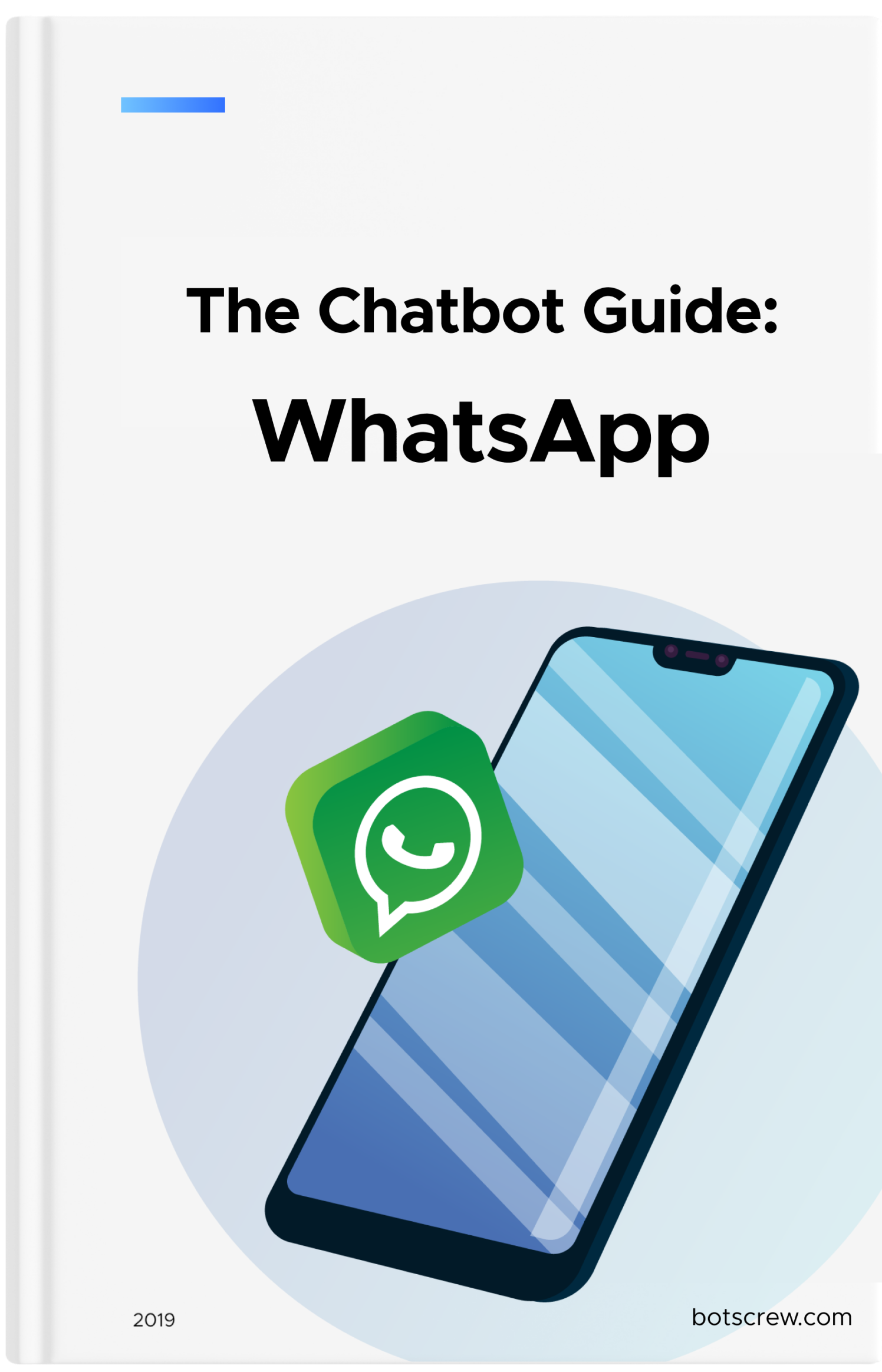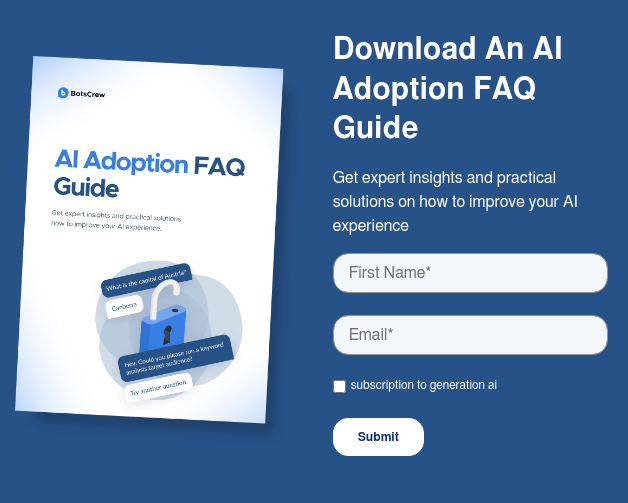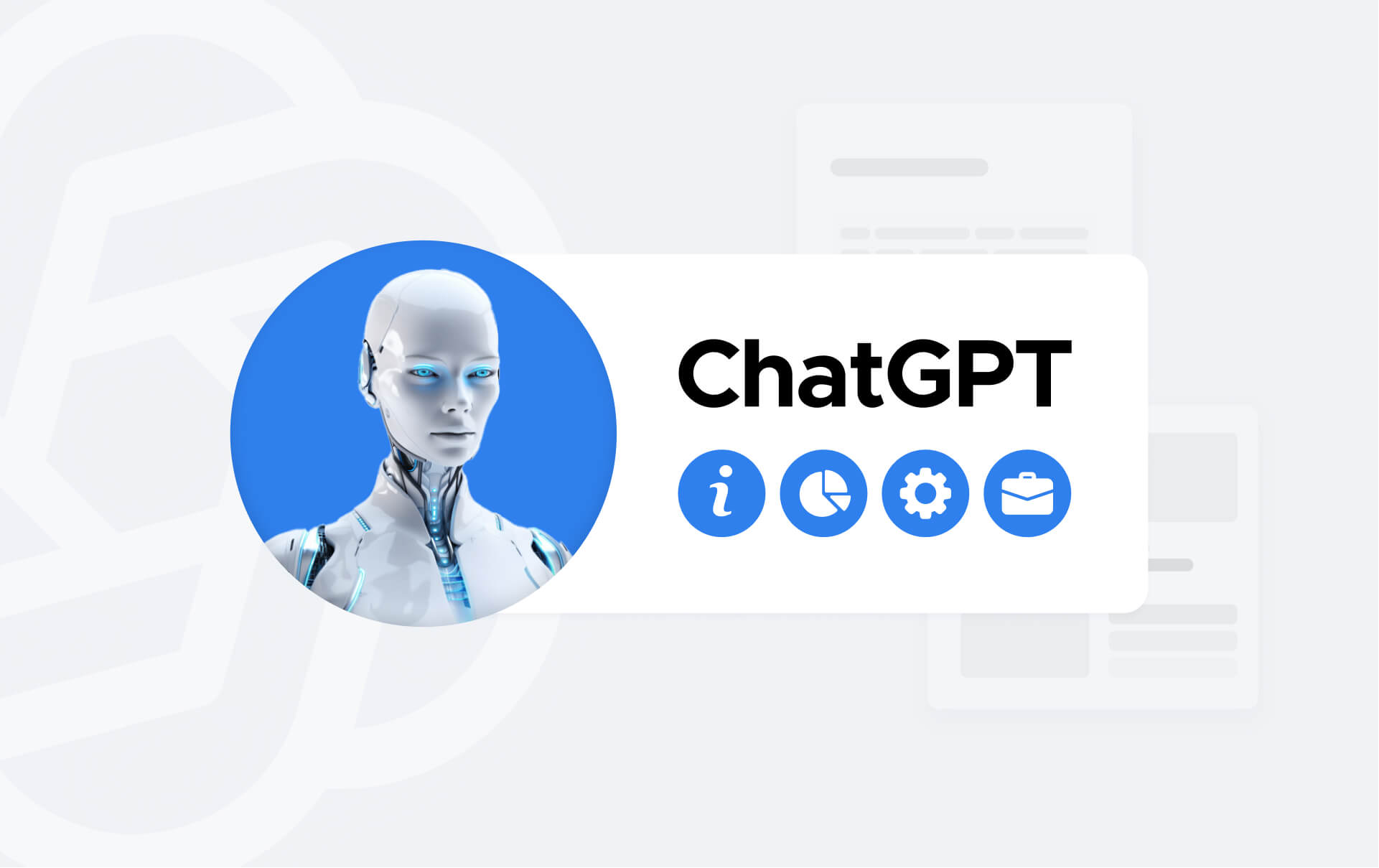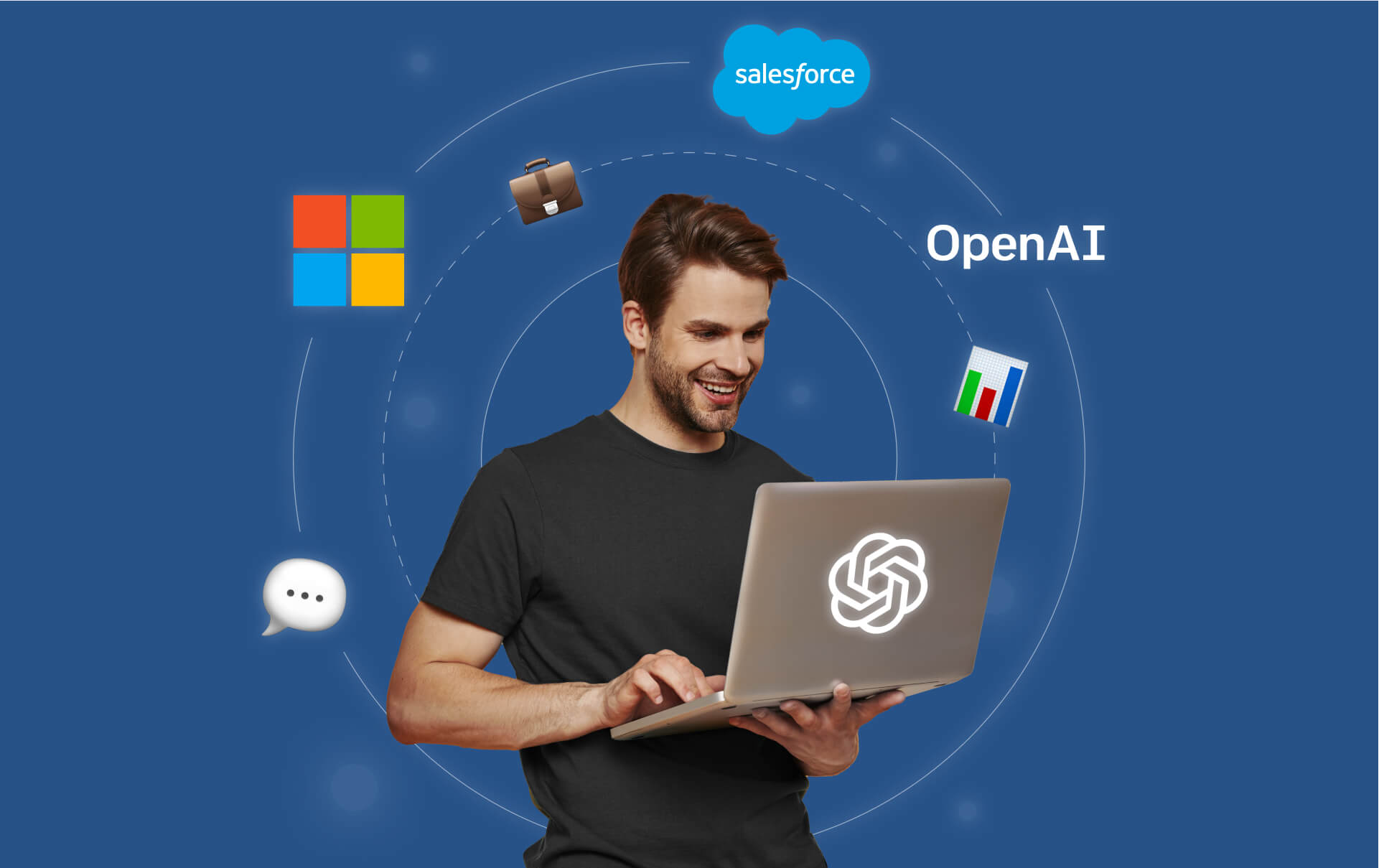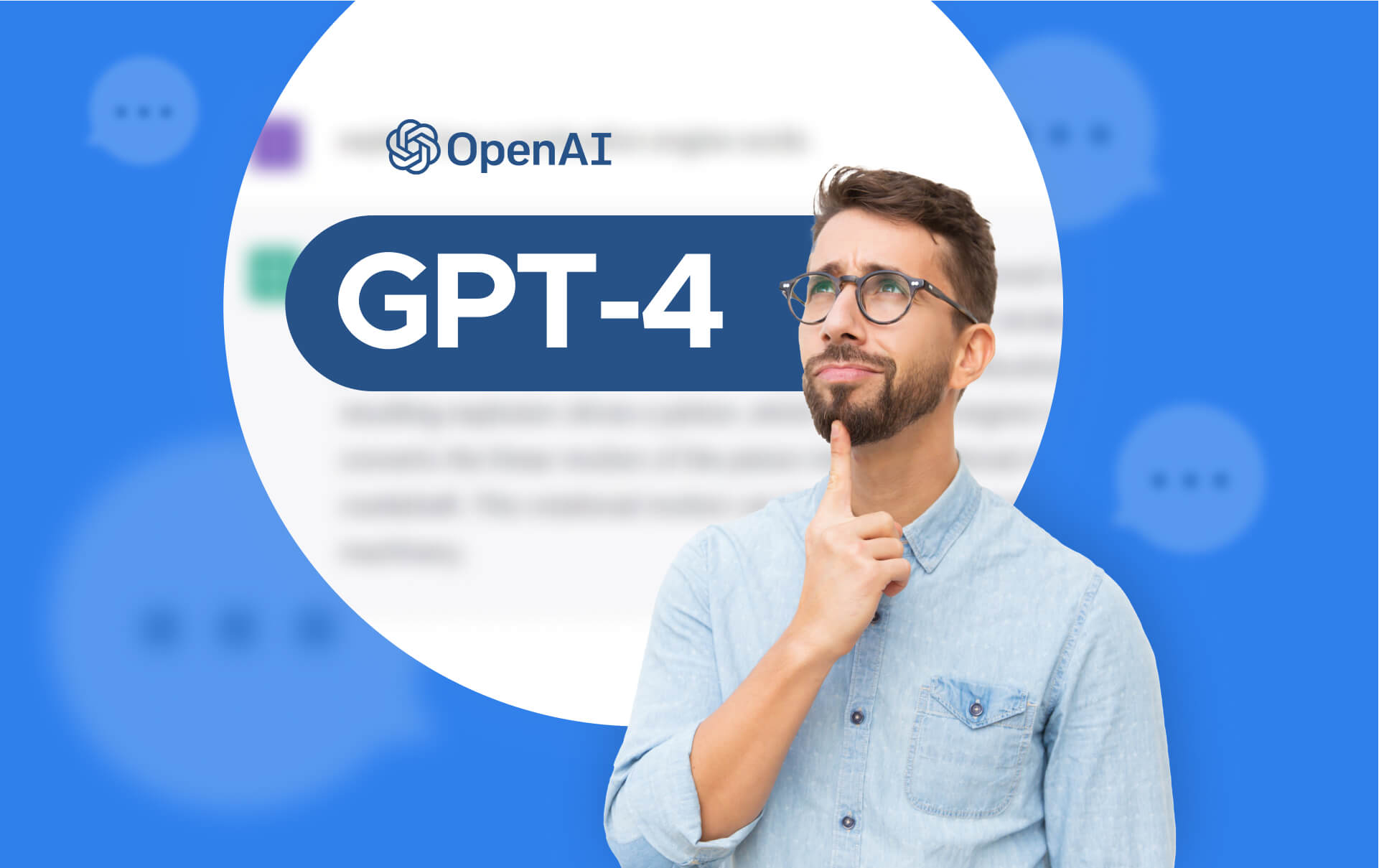Chatbot for Data Analytics: How to Use GPT Chatbots For Unlocking Insights
We are all excited about ChatGPT and GPT-based assistants, but do you have an idea how these solutions can enhance data analytics? Get valuable insights for all decision-makers with BotsCrew — when data leads, a better user experience follows!
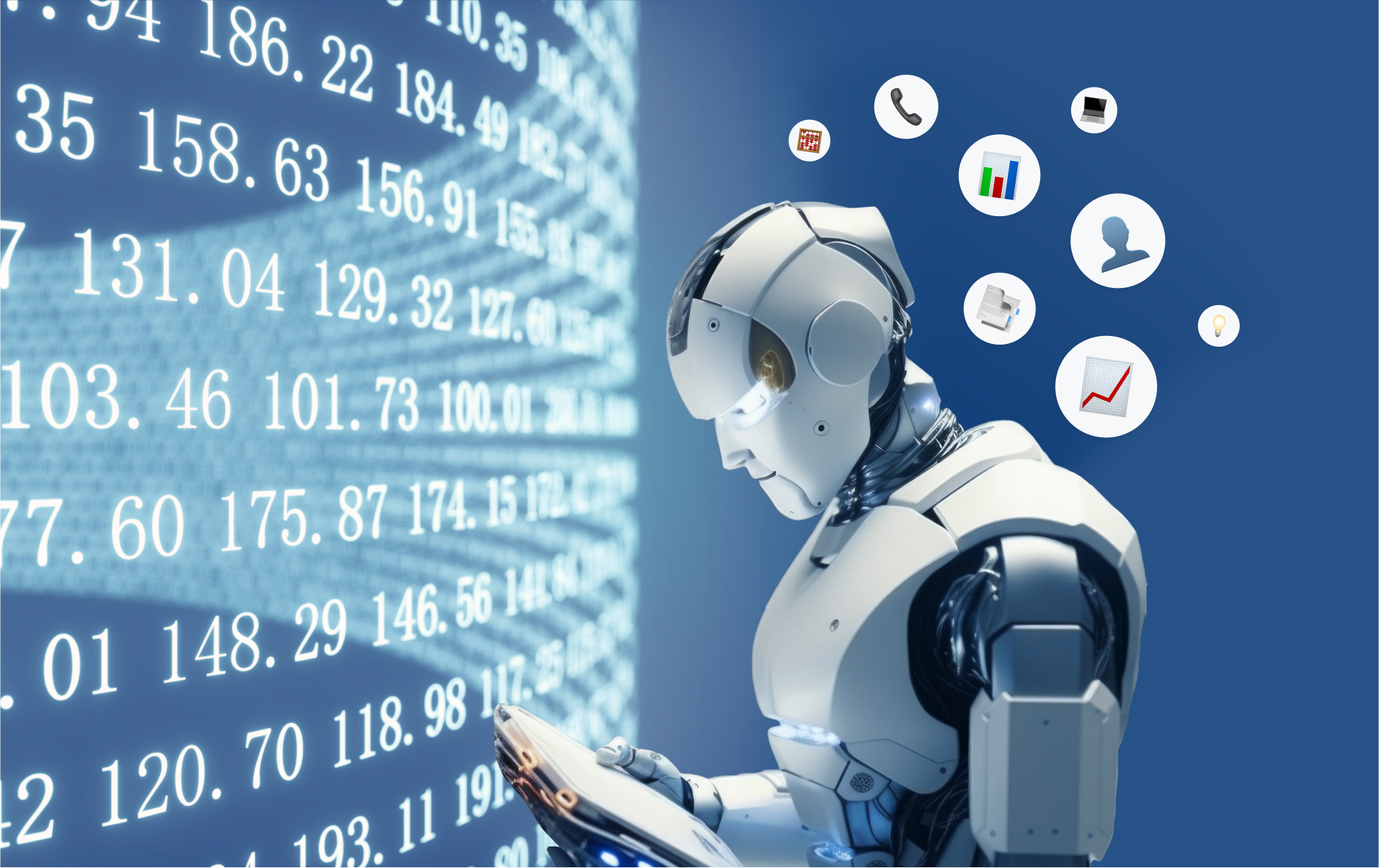
Nowadays, companies of all shapes and sizes collect data — from marketing campaigns to website traffic, activity, and operations. Certainly, there's a lot of data out there these days.
And, according to McKinsey Global Institute, it continues to double every three years! Yet, despite all of the discussion around data and its transformational possibilities, only 12% of it is being analyzed.

The worst news is that data analysis is a time-consuming task. Well, buckle up because that used to be the deal until now. ChatGPT and GPT-powered chatbots are key game-changers in the data analytics landscape and can offer support for data analysts, marketing, and sales teams.
Linking up GPT to the company's data warehouse or Business Intelligence tools — SQL databases, Tableau, CRM, ERP, and more not only enhances its usefulness but also propels the technology to the forefront of advancement in data analytics for various domains.
No need to summon data analysts or sift through numerous reports for insights or comparisons. A chatbot for data analytics will handle these tasks, freeing up time for smarter business decisions. Discover how to use ChatGPT to analyze data, and what security measures should be considered.
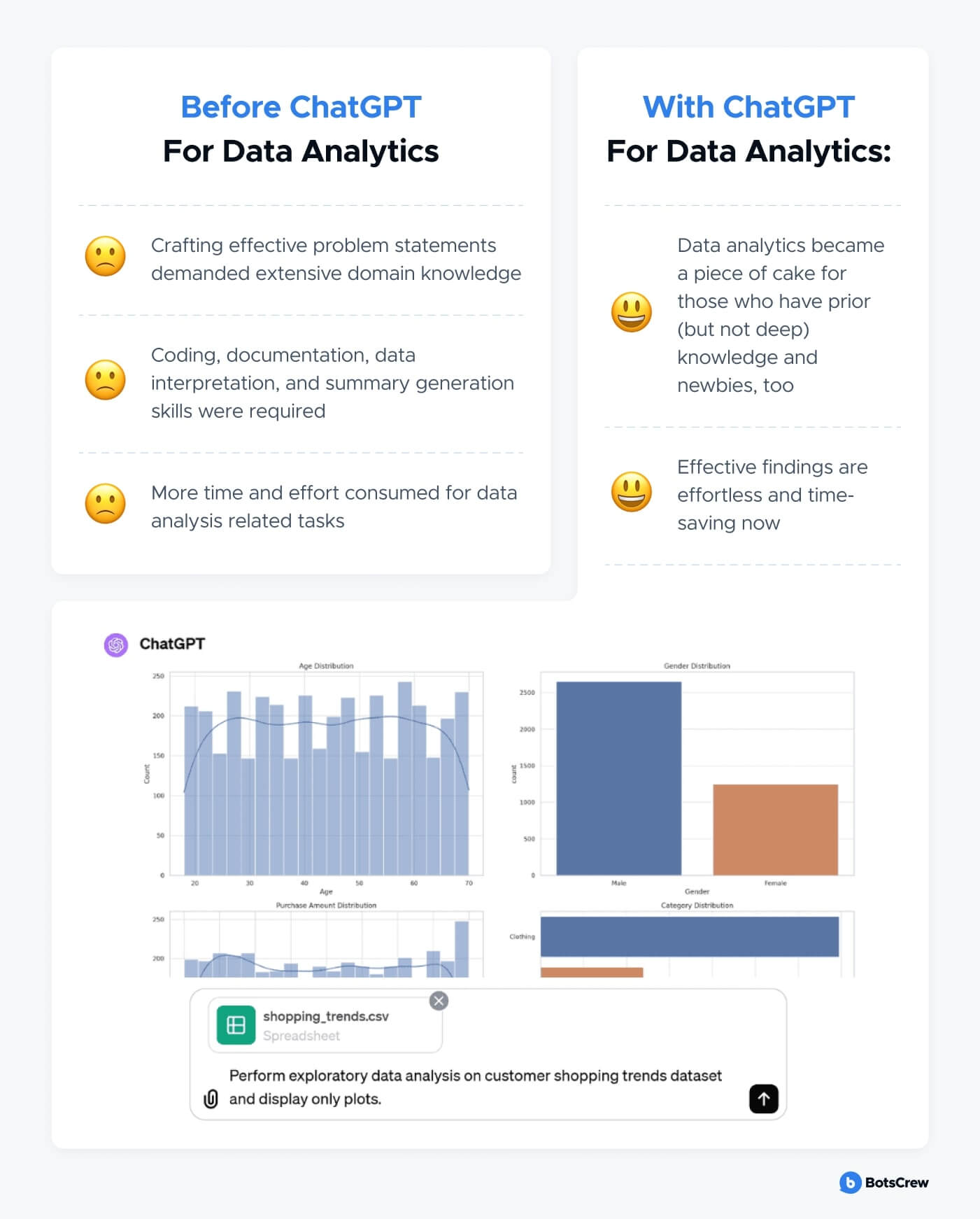
Faster, Smarter, Expandable: ChatGPT & GPT Assistants Benefits for Data Analytics
The combination of Generative Pre-trained Transformers (GPT) and chatbots isn't just another tool in the shed for data analysts — it's like having a data sidekick that's got your back. The technology can help business owners and data professionals to crunch, explore, and team up on their data-driven findings.
It's all about speed and efficiency — ChatGPT and GPT API can munch through large amounts of data. Through their processing capabilities, the program can interpret and understand written queries, and provide relevant insights from the data.
GPT-based solutions can help businesses overcome the challenges of manual data analysis with its exceptional:
✅ Speed. They can analyze data at a much faster rate than humans, slashing the time needed for analysis and decision-making.
✅ Accuracy. GPT assistants are less prone to errors compared to humans, which means that the insights they provide are more accurate and reliable.
✅ Scalability. They can process large volumes of data at scale. No matter how big the dataset, they've got it covered.
Here's the scoop on what ChatGPT and GPT-based chatbots bring to the table for sophisticated data analysis:
Trends identifying & visualization capabilities: it helps data analysts dive into their data, spot patterns, and whip up jaw-dropping data visualizations.
These visuals make it a breeze for analysts to spot trends, and nuggets of insight as well as communicate findings with confidence, and captivate stakeholders or any audience from the very start. The best part is that ChatGPT can create captivating, informative pie charts, bar graphs, correlation matrices, and even complex visualizations with just a few words!
In addition, the latest update has leveled up the ChatGPT experience. No more juggling between various options like the original GPT-4, GPT4 with advanced analysis, or DALLE-3. All you need to do now is type in your prompt, and ChatGPT will work its magic, delivering exactly what you need, hassle-free!
Patterns & anomalies identifying: ChatGPT for enterprise & GPT assistants can uncover relationships that might have slipped through the cracks at first glance, notifying a user about abnormal patterns and anomalies that need a closer look.
Although manual analysis lets specialists dive deep into data, spotting any irregularities, it can eat up a lot of time. This is where leveraging ChatGPT for data analysis proves invaluable.
For instance, you've got a dataset with daily temperature readings for a city spanning a bunch of years. Your goal is to spot any unusual patterns in the data that could signal crazy weather or recording slip-ups. You can direct ChatGPT to analyze data patterns, flag any inconsistencies, and pinpoint outliers.
Pay attention the whole time series may not fit in the context window. While you can chunk up the data and feed it piecemeal to the LLM, this isn't great if you have a long time series, where later values have some relationship to earlier values).
Bridging the gap with non-techies: it serves as a lifesaver when it comes to breaking down the data talk for non-technical stakeholders.
Using natural language, ChatGPT and GPT chatbots help analysts explain the nitty-gritty of data in a way that anyone can understand. Just request the data in ChatGPT for a specific period, and within seconds, you'll have the results right at your fingertips.

Christina Vergelets, Head of Sales & Business Development at BotsCrew
"My strong belief is that data's primary purpose is to serve sales, marketing, product, supply chain, etc. — all those folks that make strategic decisions that impact entire organizations but have no idea how to use Power BI or Tableau and little to no data & analytical background.
For them, GPT-powered assistants make data retrieval and analysis the fastest and easiest it's ever been. Instead of checking multiple dashboards myself or having a Data Analyst spend hours processing my request, I can just hop in the chat and ask: "How many sales of product X were made in Y geographical area in Q4 — 2023?" and get my answer back in minutes. Conversational, fast, and way more simple in use — compared to dedicated tools."
Support hypothesis testing: data analysts can come up with theories based on their exploration, and GPT assistants will help design experiments or suggest statistical tests to validate those hypotheses.
As an example, you have a dataset containing details about sales for two products, A and B, across different spots. GPT chatbots have got your back in testing out the theory that product A's average sales are higher than product B's.
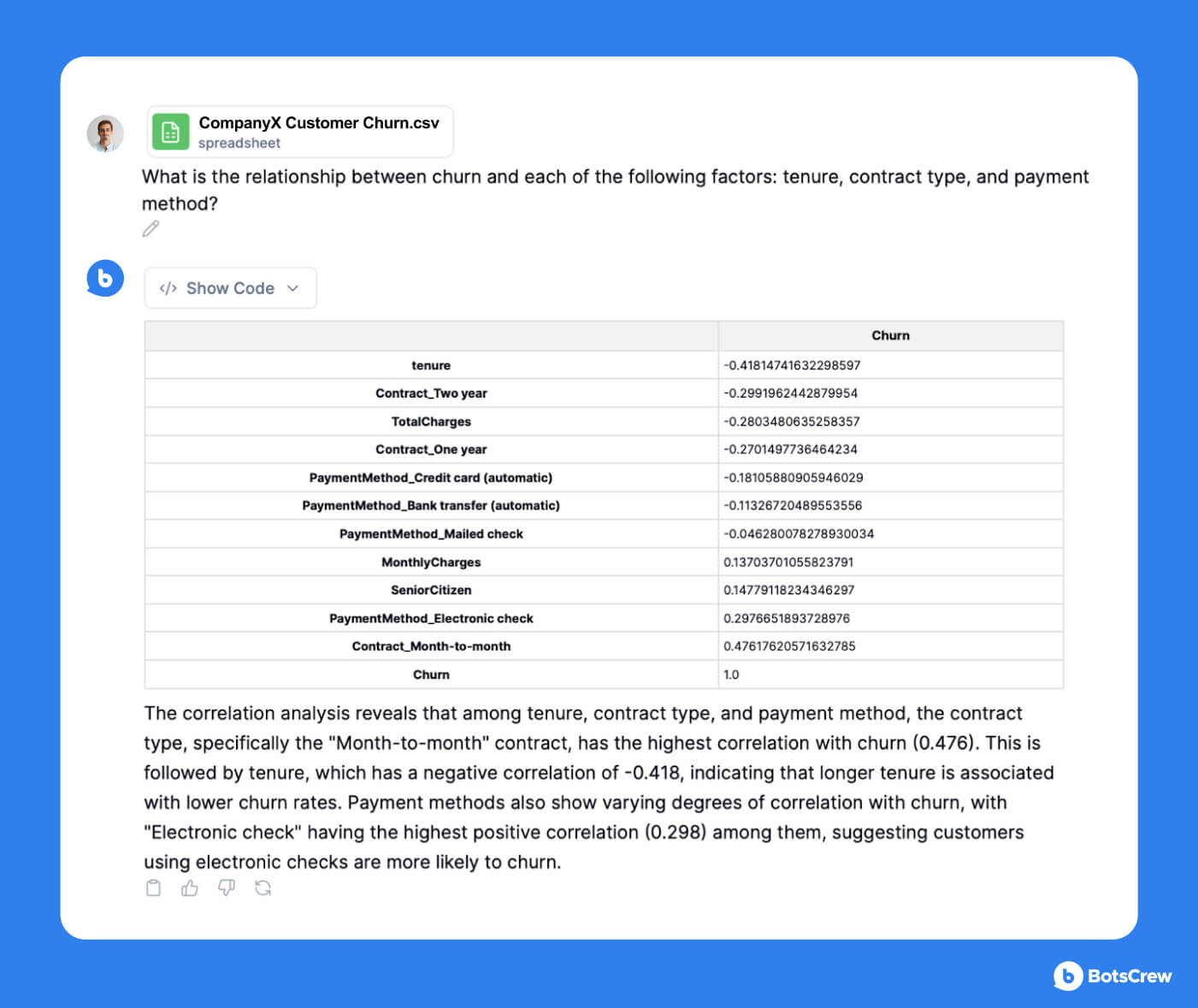
😎 Ready to kickstart your GPT-powered chatbot journey? Discover how GPT works on your data for free.
GPT In Action: Practical Use Cases for GPT Assistants & ChatGPT in Data Analytics
Even though GPT-powered assistants are in the relatively early days of scaling, there are dozens of GPT solutions across various functions, including the following:

AI use cases across various businesses — McKinsey report
Also, GPT is actively adopted in various industries specifically for data analytics. We've put together a few examples below.
Healthcare & Mental Health
An RPA chatbot (or any kind of internal chatbot) can analyze patient data to identify patterns and changes, which can help healthcare companies suggest potential diagnoses and make informed decisions about patient care.
GPT-based assistants can recognize not only physical problems. They can dive into data from mental health apps or chats, offering personalized support to patients in need. In fact, AI is already deep in the game where human psychology and emotions are in play, making it a key feature of the best mental health EMR systems.
Machines are getting the hang of understanding and even mimicking human feelings. "Emotional programming" helps with decoding the signals packed into facial expressions, gestures, eye contact, tone of voice, and speech patterns. It's like reading between the lines but for machines!
Looking ahead, we can anticipate that future AI solutions including a business intelligence chatbot won't just rely on input data from individuals or documents. Instead, GPT apps will first collect and analyze data comprehensively and then collaborate with individuals to devise tailored solutions aimed at improving psychological well-being.
Hospitality
Experts suggest that about 70% of travel agencies and 60% of hotels will use various AI solutions such as a GPT chatbot for data analytics, in the following years. For instance, the hospitality innovator Airbnb has about 1.5 petabytes of data now.
This data, along with the Business Intelligence (BI) derived from it, serves as the lifeblood of the company's operations. Until recently, access to this information was limited to data scientists and analysts.
However, in a bid to democratize access to data beyond just data experts like scientists and analysts, Airbnb developed a user-friendly data analytics platform called AirPal. This platform grants all employees access to data and the necessary tools for querying it.
BotsCrew's Case Study: GPT-Powered Chatbot For A Retail Giant
For over 7 years, we've been passionately collaborating with Fortune 500 companies including Samsung NEXT, Honda, Mars, KIA, FIBA, the International Committee of the Red Cross (ICRC), Adidas, and others.

Our portfolio includes a highly effective Data Analytics chatbot for the big retail player, now used by its marketers and other internal marketing specialists focused on data analytics to analyze ALL the data they have at their disposal.
It allows the company's employees to extract data on value and volume, categories, different regions, brands, and competitors, surfing through databases to answer questions, create graphs, or visualize reports on demand, generating valuable insights and making smart, data-driven decisions based on all their data, without writing any SQL queries, hiring a dedicated data scientist team, or getting stuck for hours with tries to find the required info from hundreds of databases, documents, and tables.
Effortless and smart! For instance, specialists can request the main drivers of growth for brands with sales exceeding $1M during a specific period or the most promising sales opportunities of Q3.
Here are the types of questions the GPT-4 powered chatbot covers:
- FAQ: the company's employees can quickly find meanings for company-specific abbreviations.
- DAX queries: they can access data for specific periods or regions, although GPT itself doesn't have direct access. It formulates queries that the database retrieves.
- Clarifying questions: for instance, if a user asks about brand X's performance/revenue in 2023, he can then clarify the indicators for the same brand in 2022 with zero hallucinations.
Additionally, users have the opportunity to share feedback on their chatbot experience, which plays a vital role in refining the system for better performance. By considering user ratings and comments, adjustments can be made to enhance the chatbot's accuracy and reliability in future interactions.
Excitement is Justified, But Caution is Required: How We Make Sure Open AI Doesn't Use Your Customers' Data
As with every tech solution, business leaders need to act with eyes wide open since the GPT assistants and ChatGPT present some ethical and practical challenges. Massive data leaks and other security issues are one of them.
Nowadays, a key value for any business is customer privacy. Amazon and its companies, such as Twitch, store the data of over 300 million users. Leaks of such a large-scale database turned into a scandal for Amazon and caused certain damage to its reputation. Here are relatively recent incidents:
- May 2021 — an open database of over 13 million fake Amazon reviews was discovered on an Elasticsearch server.
- July 2021 — the EU fines Amazon more than $852 million for violating the General Data Protection Regulation (GDPR).
- October 2021 — a hacker extracted 128 GB of personal information of Twitch users, which contained the amount of streamers' earnings.
Unless deployed locally, the language model might share your data with the provider's servers, potentially exposing it to unauthorized access. To safeguard enterprise data, the model should either be deployed locally or on a private cloud. This ensures you maintain complete control over data processing and ensures the model complies with your internal policies and regulations.
In addition, ChatGPT may use your data for its further development and service improvement. In March 2023, the Italian data protection authority even banned ChatGPT in Italy temporarily for, among other things, lacking a legal basis for processing personal data for training the AI algorithm.
OpenAI itself doesn't recommend ChatGPT for sensitive data — unless you use an API Platform to own and control your data and decide who has access to it. Through this API platform, companies can integrate ChatGPT into their services.
OpenAI doesn't use the data you submit via API to train or enhance its services. However, any info sent to our APIs is stored on servers in the US. We hold onto this data for up to 30 days for abuse monitoring purposes. The company allows you to opt out of this monitoring using this form, ensuring your data isn't stored or processed anywhere.
This means that your data journey begins and ends with each API call. When you send data via the API, you receive the output as a response from the API call. OpenAI doesn't retain or store any data sent between each API request. An Open AI API Platform has been audited and certified for SOC 2 Type 2 compliance.
Plus, you have the flexibility to tailor specific models to your needs by refining them with your prompt-completion pairs. These personalized models are exclusively for your use and are never shared with others or used to train other models.
Any data you submit to refine a model is kept until you decide to delete the files. Last but not least, in ChatGPT, users can simply turn off chat history, deciding by themselves which conversations can be used to train Open AI models. More details on security and privacy are available via link.

The safety of your data is essential. That's why we're dedicated to ensuring every aspect of each of our projects is secure. We collaborated with an enterprise company that owned giant databases with numbers and reports. The chatbot we developed now helps our client to quickly access information and sales data about the business and enterprise brands.
To obtain key takeaways, employees needed to address data analysts. A GPT-powered chatbot we developed for them provides search, analysis, and extracting reports on demand — just like a data analyst would do.
A regular natural language request is transformed into a query for the database. The AI locates the data, processes it according to a user request, and forms a response in the form of text or image. Key features of the solution include Quick search across multiple sources, Data summarization, Data visualization, Scalability, and Data protection.
To protect sensitive data, we connected a GPT-4 API for processing requests. This way, our clients can be sure Open AI won't use their data for training purposes — as ChatGPT does. Secondly, we use OpenAI only to generate a query to the database. No actual data — facts, numbers, stats — are shared with OpenAI.

Oleh Pylypchak, CTO & Co-Founder at BotsCrew & Curify
"At Botscrew, we prioritize data security and privacy with Open AI technologies like GPT. It's important to understand that Open AI only knows what it is trained on, not specific data unless fed.
To ensure your data's safety, we anonymize all data used for training, enforce strict data handling policies, and employ advanced encryption techniques. Regular security audits keep our protocols updated. The key to Open AI not accessing your data lies in stringent data security practices and responsible AI use."

Christina Vergelets, Head of Sales & Business Development at BotsCrew
"Leads requests for data analytics vary drastically — what unites them, however, is AI Assistants with an enterprise level of data protection, intuitive and highly adaptive User Interface (e.g., Microsoft Teams), ability to combine static and dynamic data, and producing outputs that can be then put into work.
To cater to these needs, BotsCrew provides technology that's trusted by Fortune 500 brands, coupled with customization services. Essentially, it's secure conversational data analysis on your own rules."
Need a GPT Chatbot for Data Tracking and Analytics? Unleash the Power of Data with BotsCrew
ChatGPT and GPT-powered assistants are secret ingredients for businesses to unlock market trends and customer desires that might otherwise go unnoticed. Even if you're content with your current status, taking a peek at your data analytics now can help you stay prepared for any opportunities that may arise in the following year.

Christina Vergelets, Head of Sales & Business Development at BotsCrew
"For big organizations, data analysis is unimaginably time-consuming and expensive. Many of the recent surveys confirm that 80%+ of such companies are going to look and invest in Generative AI as an opportunity to optimize these costs — so it's safe to assume the tech/AI space will respond to their needs.
I expect that AI & GPT assistants for data analysis will learn to provide 100% accurate results, spot trends and patterns, visualize findings, and produce suggested action items much faster. It will not, however, fully replace people as many fear — critical thinking and strategic planning required in data analysis will still heavily rely on human expertise."
We at BotsCrew provide GPT-powered one-on-one solutions tailored to your mission-critical priorities for actionable, objective insight to help businesses across all industries make smarter, faster decisions to stay ahead of the competition and accelerate growth.
✅ Gain a deeper understanding of your audience, unlocking valuable insights to help you make more informed decisions.
✅ Advance your business with data. Access reliable reports to track and optimize your chatbots' performance. Make informed business decisions backed by real data.
✅ Discover the busiest period to efficiently plan supply chains and meet customer demands precisely, ensuring you offer customers exactly what they need in the exact quantities required.
✅ Control your data. Be sure the internal data or prompt history is not used by Open AI for training, as it is in ChatGPT. Also, provide employees with the option of separate access to log in and utilize the solution. We respect your data privacy and are strongly committed to advancing query security and data protection.
✅ Seamlessly integrate your chatbot for data analytics with any data sources or software such as CRM systems, marketing automation platforms, eCommerce platforms, BI software, and more.
✅ Accelerate revenue growth with valuable insights, and drive success effortlessly.
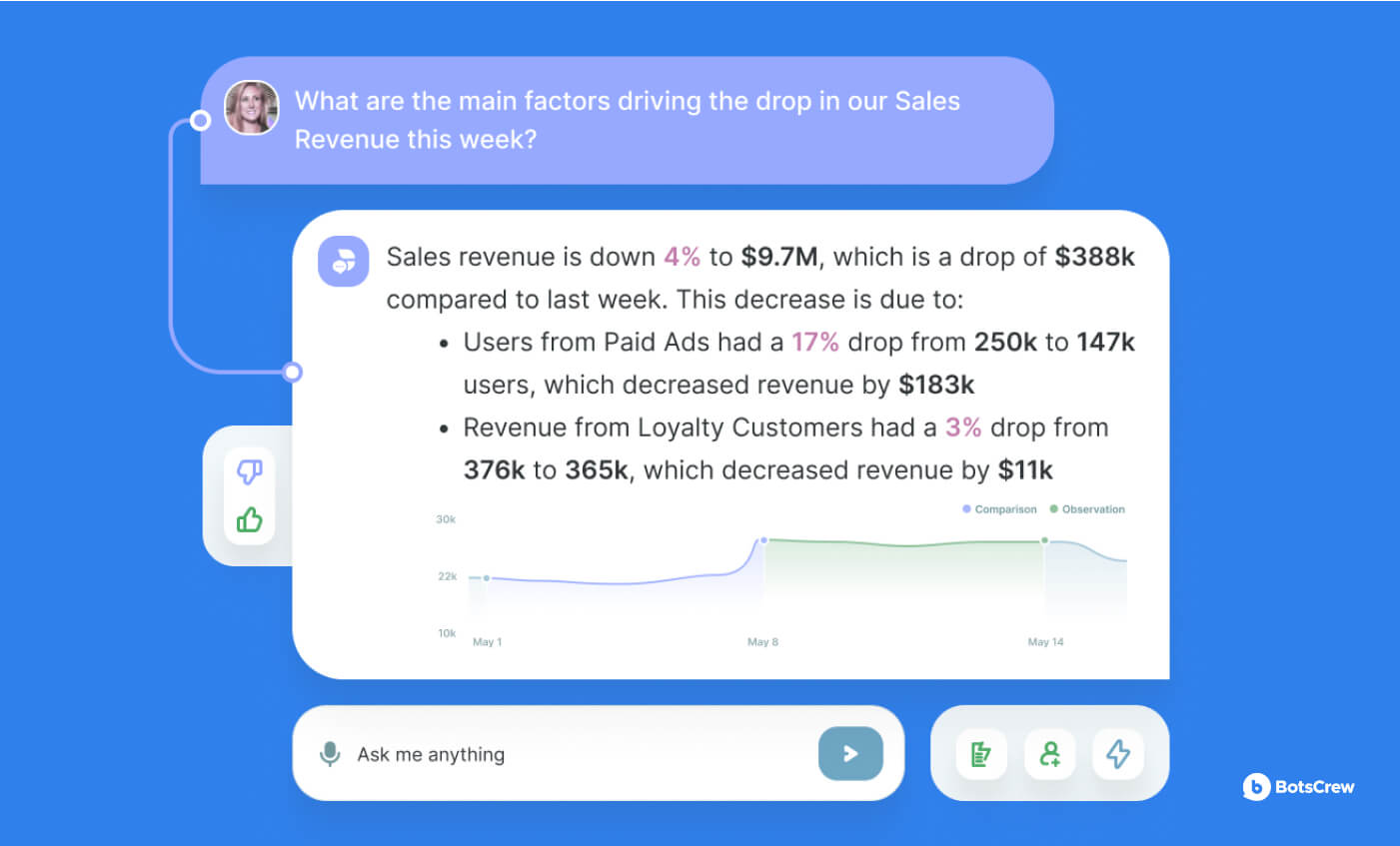
Join companies embracing the modern era of data analytics. Develop a solution that gives you the whole picture.
Say goodbye to limited insights and embrace the unlimited potential of your data. Contact us to learn how we leverage Generative AI with predictable results and up-to-security standards.
FAQ
What is a GPT-powered chatbot for data analytics?
A GPT-powered chatbot for data analytics is an AI system built using the GPT (Generative Pre-trained Transformer) architecture, designed specifically to assist users in performing data analytics tasks through natural language interaction.
What types of data analytics tasks can a GPT-powered chatbot perform?
GPT-powered chatbots can handle a wide range of data analytics tasks, including data exploration, trend analysis, pattern recognition, statistical summaries, predictive modeling, and more, depending on their capabilities and training data.
How does ChatGPT help with data analytics?
ChatGPT can assist in data analytics by answering questions, providing insights, performing simple analyses, and even generating reports based on the data provided to it. Its natural language understanding capabilities make it easy to interact with, even for users without technical expertise.
Can a GPT-powered chatbot handle sensitive or confidential data?
With GPT-powered chatbots, it's important to exercise caution when sharing sensitive or confidential data. Users should ensure that appropriate security measures are in place when interacting with these chatbots.




